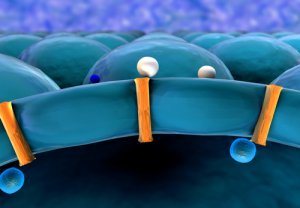Authors:
Researches on this mechanism of aging are carrying out intensively by A. Bartke,
History:

The history of researches on the metabolism covers several centuries. At present, metabolic diseases associated with aging are actively investigated. The purpose of those investigations is improvement of the life quality and development of methods allowing to increase human life span.
Example:
Alterations of cell metabolism during aging, especially energy generation pathways often result in disease or acceleration of the aging process, namely diabetes, fatty liver disease, cardiovascular diseases, infertility and cancer.
Description:
Metabolism is a term that is used to describe all chemical reactions involved in maintaining the living state of the cells and the organism.
 The aging process is characterized by progressive metabolic decline over time, namely by insulin resistance, and physiological declines in growth hormone (GH),
The aging process is characterized by progressive metabolic decline over time, namely by insulin resistance, and physiological declines in growth hormone (GH),
Aging is arguably the most universal contributor to the etiologies of metabolic decline and related diseases, including type 2 diabetes mellitus, cardiovascular disease, and stroke. Insulin resistance represents a major component of metabolic syndrome and is commonly observed in older adults.  Major impairments include unrestrained hepatic gluconeogenesis, adipose lipogenesis, and defective glycogen synthesis and glucose uptake in skeletal muscle. Abdominal obesity, which is commonly observed with aging, is a major contributor metabolic syndrome.
Major impairments include unrestrained hepatic gluconeogenesis, adipose lipogenesis, and defective glycogen synthesis and glucose uptake in skeletal muscle. Abdominal obesity, which is commonly observed with aging, is a major contributor metabolic syndrome.
Aging is also associated with an increase in proinflammatory cytokines, which are known to interfere with insulin action. These cytokines are derived from both the
Additions and Criticism:
Results of researches made on experimental animals and human demonstrated that the process of aging is accompanied by changes in the ability of an organism to regulate water and electrolyte (mainly, sodium) balance.

Generally, dehydratation of tissues, hypo- or hypernatremia take place, and mineral balance becomes negative. Moreover, elderly people are much more sensitive to the changes of that balance than young ones.
Imbalance of minerals (e.g. calcium and magnesium) observed as we age promotes osteoporosis. That imbalance is associated with
Publications:
- Barzilai, Nir, et al. «The critical role of metabolic pathways in aging." Diabetes 61.6 (2012): 1315–1322.
- Rana, Karan S., et al. «The interaction between metabolic disease and ageing." Global journal of obesity, diabetes and metabolic syndrome 1.1 (2014).
- Wu, Lindsay E., Ana P. Gomes, and David A. Sinclair. «Geroncogenesis: metabolic changes during aging as a driver of tumorigenesis." Cancer cell 25.1 (2014): 12–19.